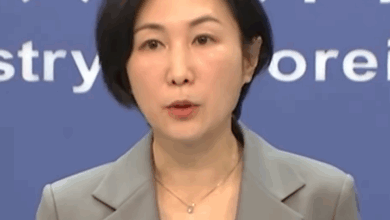
New York (CNN Business) – Having children is expensive, no matter where in the world you live. But, while America finds itself in the middle of the cost scale, China has become one of the priciest places to raise kids.
South Korea tops the list of most expensive places to raise a child from birth to age 18, measured as a percentage of per capita gross domestic product, according to research from Jefferies (JEF) which used data from Yuwa Population Research. GDP is the broadest measure of a nation’s economic activity.
China comes in second, followed by Italy. The United States is wedged in the middle of the top 14 most expensive places, between Germany and Japan.
However, in terms of the absolute amount of money spent, China is one of the cheapest places to have kids. But it’s all relative: “If we then adjust that data to percentage of average disposable income, China becomes the most expensive place to raise kids,” said the Jefferies researchers.
So what makes it so costly to raise kids in the Far East?
A big part of it is the cost of education and the cost and availability of care when the child is in their younger years. Pre-school services in China have been mostly private until recently, according to Jefferies.
It takes more than $75,000 to raise a child until the age of 18 in China, and another $22,000 to get them through university.
While that sounds like much cheaper tuition than students in the United States might face, there’s a key difference: “In many other Western countries, a student loan provided by state is more common, and the burden is lifted from parents and transferred to children themselves,” the Jefferies analysts said.
In America, for example, 55 percent of undergraduate students graduated with debt in the 2019-2020 academic year, according to data from the College Board.
What the government can do
Lawmakers have plenty of options to reduce the cost of having children, including subsidizing child care to limit the gap between people in different income classes.
Beijing is already stepping in to make after-school tutoring more accessible. Next on the list could be the cost of nursery and kindergarten, the Jefferies analysts think.
“We understand that the government is seeking to either have the state provide these services and/or regulate the price of private services,” they said.
China’s government announced in its current five-year plan that it aims to grow the number of nursery school places for children under three years of age to 4.5 per 1,000 people by 2025 — two and a half times the current amount of 1.8 per 1,000. At the moment, there are 42 million Chinese children under the age of three. Parents of one third of them want them to go to nursery school, but only 5.5% can actually do that, the Jefferies report found.
More wealth equals fewer children
Birth rates in wealthier countries tend to be lower than in developing nations. This is known as a “demographic-economic paradox” which means those with more means choose to have fewer children than people with lower incomes.
“As China develops economically, it’s highly possible that it will fall into the demographic-economic paradox just like many other developed countries do, and the birth rate might fall to a lower level than many expected,” the Jefferies analysts said.
Even now, Chinese couples are reluctant to have more than one child due to the high cost of raising them. While couples in Western countries appear to want two to three children, the numbers are lower in the East.
On top of that, marriage numbers are falling, too. But in Asian cultures, having kids outside of wedlock is much more uncommon compared with the West.
Demographic trends like birth rates affect a nation’s businesses and economy. Aging populations have trouble keeping up with their welfare systems, including Social Security and public pensions, as the working population declines. Over time, that can increase the need for things like automation to replace missing workers.
Demographic trends also affect companies and stocks, albeit many decades into the future, the Jefferies analysts said.
“We expect to see a continued and significant push to reduce the cost of raising children globally and more specifically in China,” they said.
That might include tax breaks, cash handouts and subsidies.




